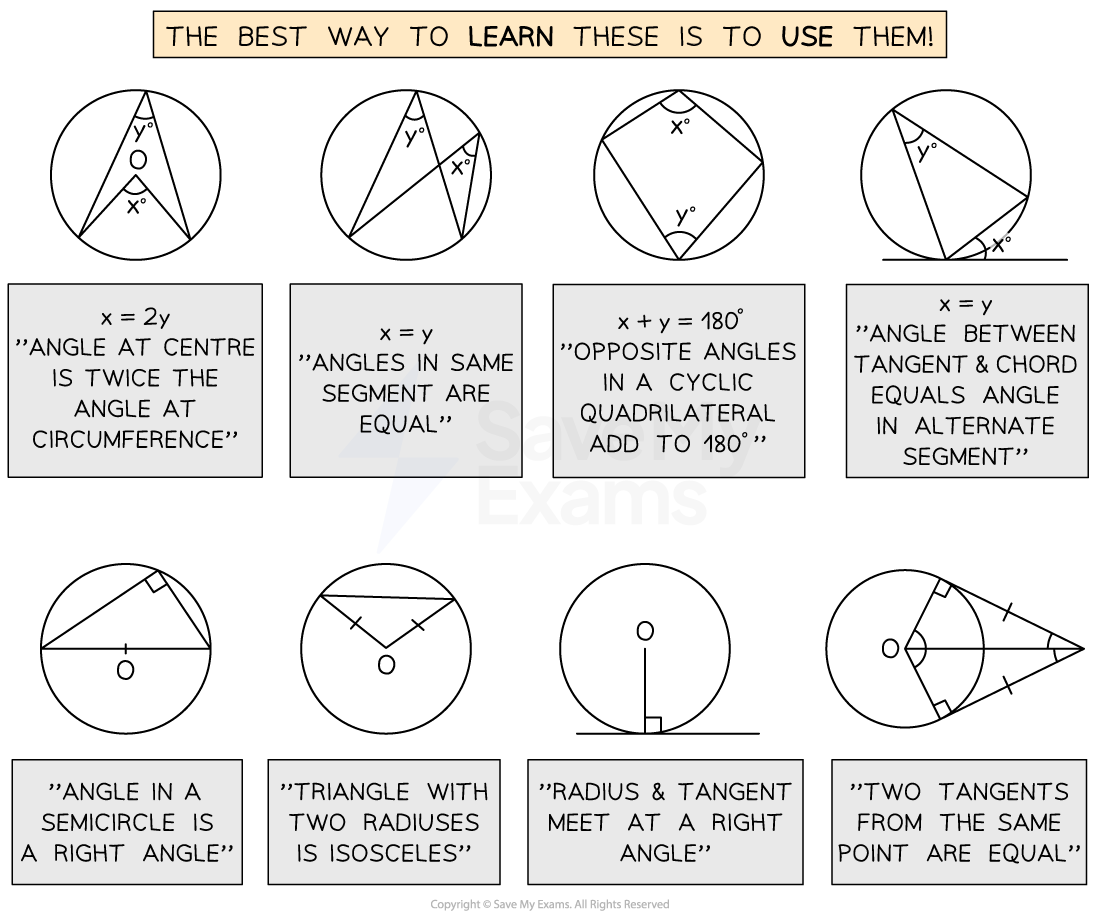Geometrical Proof
What is a geometric proof?
- Geometric proof involves using known rules about geometry to prove a new statement about geometry
- A proof question might start with “Prove…” or “Show that …”
- The rules that you might need to use to complete a proof include;
- Basic angle facts and properties of 2D shapes
- Examples
- "the angle sum in any quadrilateral is 360°"
- "an isosceles triangle has two equal sides/two equal angles"
- "vertically opposite angles are equal"
- Examples
- Angles involved with parallel lines
- alternate and corresponding angles
- Circle theorems
- there are a few of these!
- these are dealt with separately in the revision note Algebraic Circle Theorems
- Basic angle facts and properties of 2D shapes
-
- Pythagoras' theorem (only applies to right-angled triangles)
where
is the hypotenuse
- Congruence and similarity
- congruent shapes are identical
- similar shapes have equal angles; side lengths are in the same ratio to each other
- Pythagoras' theorem (only applies to right-angled triangles)
- You will need to be familiar with the vocabulary of the topics above
- reasons are often required in order to fully explain a geometrical proof
How do I write a geometric proof?
- Usually you will need to write down a few steps to prove the statement
- At any step where an angle fact is used you should write down the fact and a reason
- do this even for the most basic facts
- e.g. angles on a straight line add up to 180°
- do this even for the most basic facts
- At any step where an angle fact is used you should write down the fact and a reason
- The proof is complete when you have written down all the steps clearly
- Before getting into your steps of working for your proof
- underlining key words or facts in the question
- mark any important information given in words to a given diagram
- add any information (such as line lengths and/or angles) to the diagram using facts you know
- you can write down the steps and reasons for these later
What notation should I use?
- Labelling vertices (corners) and lengths are done in capital letters
- Examples
- "from A to B ..."
- "side lengths AB and BC are equal..."
- "triangle ABC is ..."
- Examples
- Labelling angles can be done by writing "angle ABC"
- you may see other ways including
- single letters ("angle B")
- "hat notation"
- "∠ABC" which would be read as "angle ABC"
- you may see other ways including
- Of course if an angle is marked with a letter (x or θ are common) use that
- If not, you can add your own letters in, but do make them clear on the diagram
Exam Tip
- DO show all the key steps - if in doubt, include it
- DON'T write in full sentences!
- For each step, just write down the fact, followed by the key mathematical reason that justifies it
Worked example
In the diagram below, AC and DG are parallel lines.
B lies on AC.
E and F lie on DG.
BE = BF.

Prove that angle EBF is .
Give reasons for each stage of your working.
Mark BE = BF on the diagram and realise that triangle BEF is isosceles - this may be useful later

AC and DG are parallel, so using alternate angles
Mark this on the diagram

Write the fact, and the reason using mathematical vocabulary
angle BEF = , alternate angles
Using the fact that triangle BEF is isosceles, we can see that angle BFE =
Mark this on the diagram, and write the fact and reason

angle BFE = , isosceles triangle
is the last remaining angle in a triangle; the angle sum of a triangle is 180°, so
Write the fact and reason as the last step of your proof
, triangle angle sum is 180°



